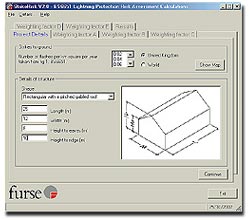|
|
|
|
|
|
Corrosion
BS 6651 contains tables of materials suitable for use in Lightning Protection System (LPS) components. Adherence to these requirements is vital to avoid corrosion problems. The correct choice of material and installation design should ensure a life span of 30 years for the earth electrode system. Inspection, testing, records and maintenance The code adequately details the requirement for inspecting an LPS, the testing required and the detailed records that should be maintained. Observance of clauses 32 to 34 of the code will highlight any maintenance of the system required. Of particular importance is the regular detailed examination of the complete LPS for any evidence of corrosion. If this check is not carried out then vital components within the LPS, which may have suffered from corrosion and which could exhibit a high resistance could be missed. This will have a detrimental effect on the whole system making it an unattractive high impedance path for the lightning current to follow. To minimise this problem, along with regular inspections, the selection of the correct materials should be made in accordance with the recommendations of BS 6651. The need for protection Before proceeding to design a lightning protection system, first carefully consider if the structure actually needs protection. In many cases, it is obvious that some form of protection is required. High risk structures eg explosives factories, oil refineries, etc, will require the highest possible class of lightning protection to be provided. In many cases the need for protection is not so evident. BS 6651 provides a simple mathematical overall risk factor analysis for assessing whether a structure needs protection. Strike Risk (BS 6651)
Strike Risk is easy to use - you simply input the size and type of structure to be protected together with relevant information about the location and use of the building. Strike Risk will then calculate the risk of your chosen structure being struck by lightning and advise whether protection is required (or not). Strike Risk includes a Lightning Flash density map of the UK (derived from BS 6651:1999). |
|
